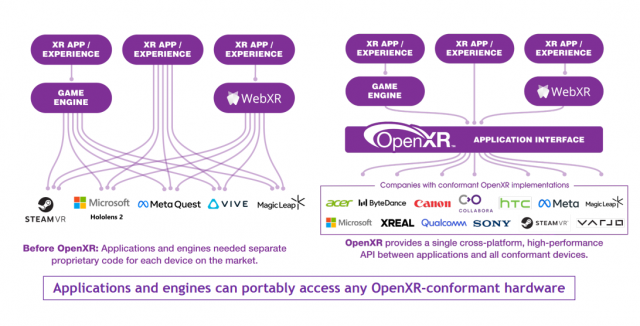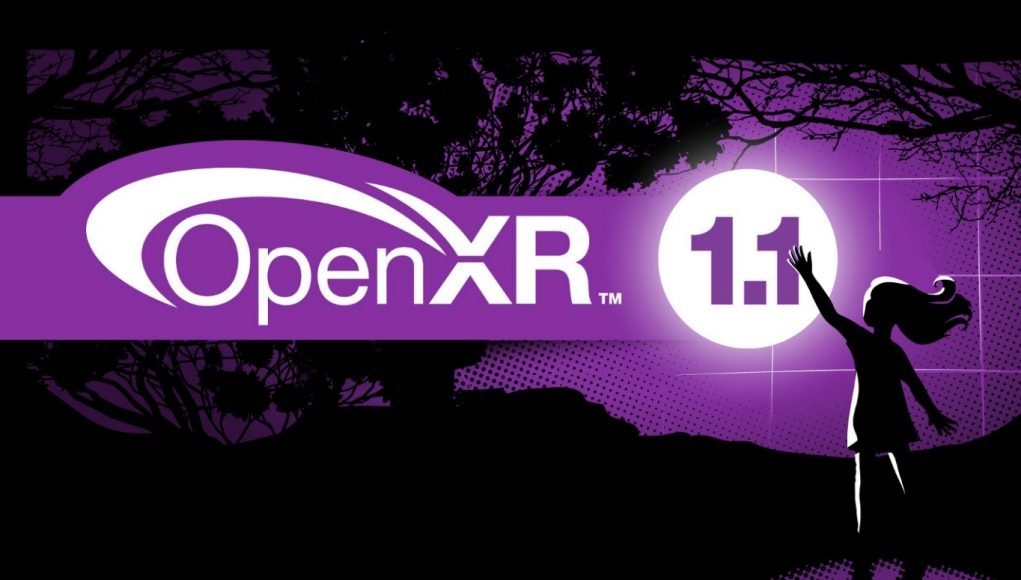OpenXR, the open standard that creates a standardized way for XR hardware and applications to interface, has seen its first major update. OpenXR 1.1 evolves the standard by incorporating new functionality that was important to the industry but previously not standardized.
Facilitated by the standards body Khronos Group, OpenXR is a royalty-free standard that aims to standardize the development of VR and AR applications, making for a more interoperable ecosystem. The standard has been in development since April 2017 and over time has become supported by virtually every major hardware, platform, and engine company in the VR industry, including key AR players—but notably, not Apple.

Following the OpenXR 1.0 release in 2019, this week’s release of OpenXR 1.1 is the first major update to the standard in more than four and a half years.
The update shows the standard evolving as industry needs emerge, an outcome that’s part of the standard’s design.
Built into the framework of OpenXR is the notion of ‘extensions’, which are vendor-specific capabilities which can customize OpenXR’s functionality without needing to first go through the process of being baked into the official standard.
In some cases, such extensions include functionality that eventually becomes universal enough to warrant inclusion in the standard overall. Thus, extensions can be ‘promoted’ and baked into the OpenXR standard for all to use and support.
OpenXR 1.1 sees the inclusion of five capabilities which originally started as extensions:
Local Floor: provides a new Reference Space with a gravity-aligned world-locked origin for standing-scale content that can be recentered to the current user position at the press of a button without a calibration procedure. It also has an estimated floor height built-in. More details about Local Floor functionality and its value to developers are available in this blog post.
Stereo with Foveated Rendering: provides a Primary View Configuration to realize eye-tracked foveated rendering or fixed foveated rendering for XR headsets across multiple graphics rendering APIs. Its use is especially beneficial for efficiently rendering high-pixel-count displays, which put a heavy load on the GPU. The original vendor extension has been adopted natively in Unity, Unreal, and recently by NVIDIA Omniverse.
Grip Surface: provides a Standard Pose Identifier that reliably anchors visual content relative to the user’s physical hand, whether the hand position is tracked directly or inferred from a physical controller’s position and orientation.
XrUuid: provides a Common Data Type to hold a Universally Unique Identifier that follows the IETF RFC 4122.
xrLocateSpaces: provides a Locating Spaces function to improve performance and simplify application code by enabling an application to locate an array of spaces in a single function call populating an “array of structures” (AoS), instead of being limited to locating a single space per function call.
Building these extensions directly into OpenXR represents the industry’s consensus on the demand for these features and how they should be implemented across the ecosystem.
OpenXR 1.1 also includes various improvements to existing features and clarifies some capabilities to make the standard clearer for those that want to build implementations that conform to the standard.
Going forward, the OpenXR working group (consisting of representatives from member companies which steer the standard) says it plans to make more regular updates to OpenXR going forward, ensuring that new capabilities continue to be added as industry needs evolve.
“OpenXR 1.1 marks a significant milestone in the development of this open standard that has become widely adopted throughout the XR industry. OpenXR 1.0 provided baseline capabilities and the foundation for experimentation with new functionality through extensions,” says Alfredo Muniz, Chair of the OpenXR Working Group. “Now the Working Group is pivoting to manage regular core specification updates that balance the need for flexibility to ship new functionality with consolidation of proven technology to reduce fragmentation and enable true cross-platform application portability.”







